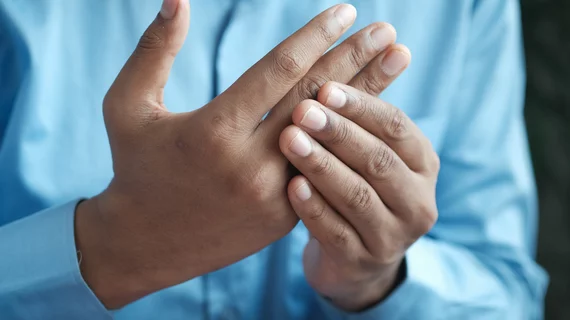Total body PET/CT scans may offer benefits for evaluating arthritis
Ultra-low-dose, total body PET/CT scans can be a useful tool in visualizing joints that are involved in autoimmune arthritis throughout the entire body, according to new research published in the Journal of Nuclear Medicine [1].
Noting that the total body PET/CT scanners exhibit superior technical characteristics compared with conventional PET/CT systems, the study’s researchers aimed to understand how the machines’ results would compare against standard, joint-by-joint rheumatological evaluations.
After looking at results for 1,997 joints, the study’s researchers found concurrence in 69.9% of all joints for a cohort of 24 study participants with autoimmune arthritis. They also assessed a group of six people with osteoarthritis and found 91.1% concurrence.
In addition, 20.1% of all joints in the autoimmune arthritis group and 8.8% of all joints in the osteoarthritis group were negative on the joint-by-joint rheumatological evaluations but positive on the PET/CT scan.
Since joint inflammation can be a precursor to joint damage, CT/PET may come to play an important role in early identification, the authors suggest.
“Early diagnosis of AIA and initiation of treatment at its onset is essential to achieve clinical remission or at least low or minimal disease activity,“ they point out.
Future studies may build upon their findings to further address the many clinical challenges in managing arthritic populations, notes Abhijit Chaudhari, PhD, one of the study’s authors and a professor of radiology at UC–Davis, says in materials sent to the media.
“For example, it is unclear which patients should receive which treatments, how exactly these treatments change the inflammatory status of different tissues or outcomes, and the impact the disease and treatments have on other organs of the body,” Chaudhari says. “Systemic molecular imaging enabled by total body PET could provide currently unavailable, objective biomarkers that could help address these challenges.”
